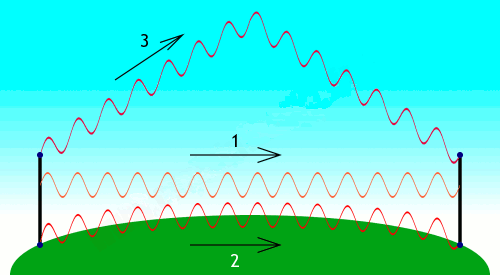Products Category
- FM Transmitter
- 0-50w 50w-1000w 2kw-10kw 10kw+
- TV Transmitter
- 0-50w 50-1kw 2kw-10kw
- FM Antenna
- TV Antenna
- Antenna Accessory
- Cable Connector Power Splitter Dummy Load
- RF Transistor
- Power Supply
- Audio Equipments
- DTV Front End Equipment
- Link System
- STL system Microwave Link system
- FM Radio
- Power Meter
- Other Products
- Special for Coronavirus
Products Tags
Fmuser Sites
- es.fmuser.net
- it.fmuser.net
- fr.fmuser.net
- de.fmuser.net
- af.fmuser.net ->Afrikaans
- sq.fmuser.net ->Albanian
- ar.fmuser.net ->Arabic
- hy.fmuser.net ->Armenian
- az.fmuser.net ->Azerbaijani
- eu.fmuser.net ->Basque
- be.fmuser.net ->Belarusian
- bg.fmuser.net ->Bulgarian
- ca.fmuser.net ->Catalan
- zh-CN.fmuser.net ->Chinese (Simplified)
- zh-TW.fmuser.net ->Chinese (Traditional)
- hr.fmuser.net ->Croatian
- cs.fmuser.net ->Czech
- da.fmuser.net ->Danish
- nl.fmuser.net ->Dutch
- et.fmuser.net ->Estonian
- tl.fmuser.net ->Filipino
- fi.fmuser.net ->Finnish
- fr.fmuser.net ->French
- gl.fmuser.net ->Galician
- ka.fmuser.net ->Georgian
- de.fmuser.net ->German
- el.fmuser.net ->Greek
- ht.fmuser.net ->Haitian Creole
- iw.fmuser.net ->Hebrew
- hi.fmuser.net ->Hindi
- hu.fmuser.net ->Hungarian
- is.fmuser.net ->Icelandic
- id.fmuser.net ->Indonesian
- ga.fmuser.net ->Irish
- it.fmuser.net ->Italian
- ja.fmuser.net ->Japanese
- ko.fmuser.net ->Korean
- lv.fmuser.net ->Latvian
- lt.fmuser.net ->Lithuanian
- mk.fmuser.net ->Macedonian
- ms.fmuser.net ->Malay
- mt.fmuser.net ->Maltese
- no.fmuser.net ->Norwegian
- fa.fmuser.net ->Persian
- pl.fmuser.net ->Polish
- pt.fmuser.net ->Portuguese
- ro.fmuser.net ->Romanian
- ru.fmuser.net ->Russian
- sr.fmuser.net ->Serbian
- sk.fmuser.net ->Slovak
- sl.fmuser.net ->Slovenian
- es.fmuser.net ->Spanish
- sw.fmuser.net ->Swahili
- sv.fmuser.net ->Swedish
- th.fmuser.net ->Thai
- tr.fmuser.net ->Turkish
- uk.fmuser.net ->Ukrainian
- ur.fmuser.net ->Urdu
- vi.fmuser.net ->Vietnamese
- cy.fmuser.net ->Welsh
- yi.fmuser.net ->Yiddish
How does the Transmitter and Antenna Work?
Imagine holding out your hand and catching words, pictures, and information passing by. That's more or less what an antenna (sometimes called an aerial) does: it's the metal rod or dish that catches radio waves and turns them into electrical signals feeding into something like a radio or television or a telephone system. Antennas like this are sometimes called receivers. A transmitter is a different kind of antenna that does the opposite job to a receiver: it turns electrical signals into radio waves so they can travel sometimes thousands of kilometers around the Earth or even into space and back. Antennas and transmitters are the key to virtually all forms of modern telecommunication. Let's take a closer look at what they are and how they work!

Waves don't always zap through the air from transmitter to receiver. Depending on what kinds (frequencies) of waves we want to send, how far we want to send them, and when we want to do it, there are actually three different ways in which the waves can travel:
1. As we've already seen, they can shoot by what's called "line of sight", in a straight line—just like a beam of light. In old-fashioned long-distance telephone networks, microwaves were used to carry calls this way between very high communications towers (fiber-optic cables have largely made this obsolete).
2. They can speed round the Earth's curvature in what's known as a ground wave. AM (medium-wave) radio tends to travel this way for short-to-moderate distances. This explains why we can hear radio signals beyond the horizon (when the transmitter and receiver are not within sight of each other).
3. They can shoot up to the sky, bounce off the ionosphere (an electrically charged part of Earth's upper atmosphere), and come back down to the ground again. This effect works best at night, which explains why distant (foreign) AM radio stations are much easier to pick up in the evenings. During the daytime, waves shooting off to the sky are absorbed by lower layers of the ionosphere. At night, that doesn't happen. Instead, higher layers of the ionosphere catch the radio waves and fling them back to Earth—giving us a very effective "sky mirror" that can help to carry radio waves over very long distances.
If you are looking for transmitter and antenna, please click the link below:
FMUSER Professional FM Transmitter
FMUSER Professional TV Transmitter
FMUSER Professional FM Antenna
FMUSER Professional TV Antenna

